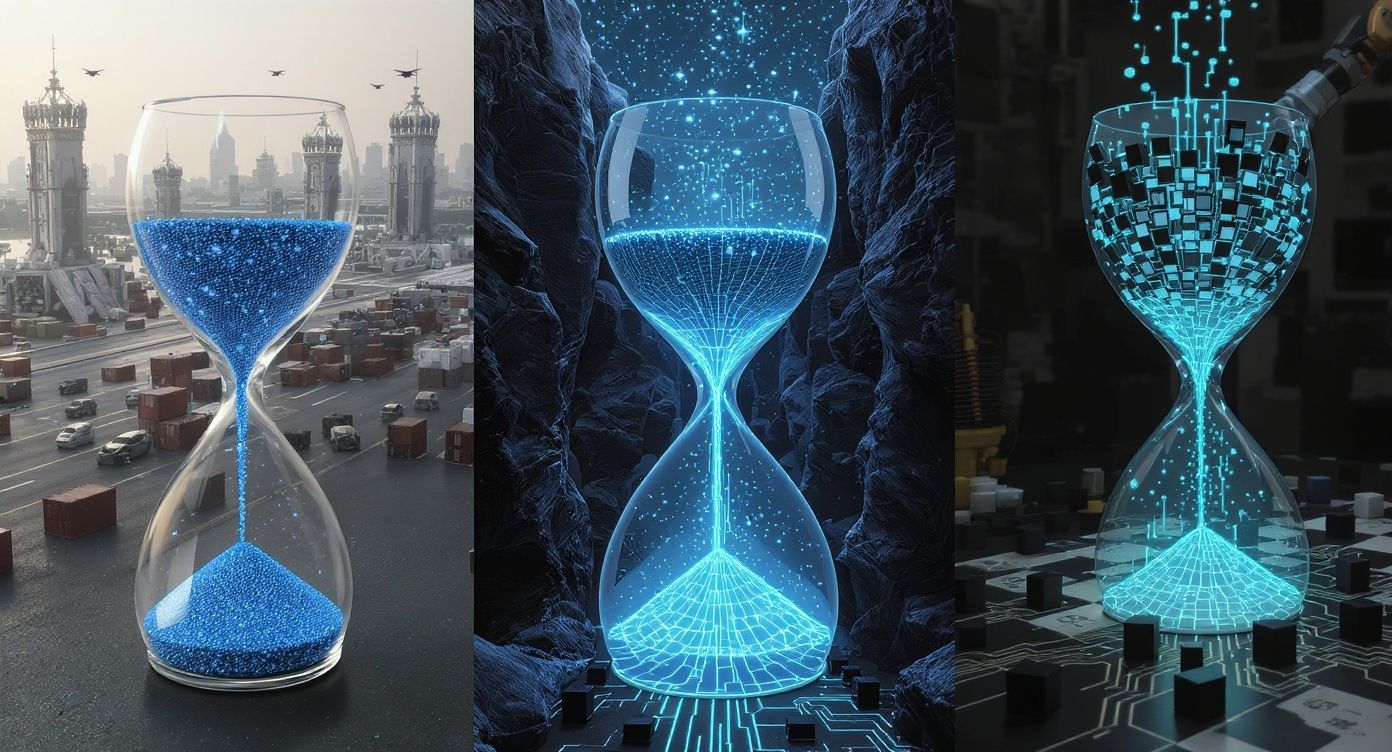- The Midas Report
- Posts
- Nvidia Turns Compute Into a Platform and Changes Who Wins in AI.
Nvidia Turns Compute Into a Platform and Changes Who Wins in AI.
3 min read.

At Siggraph 2025, Nvidia tied chips, models and simulation into a full stack play that makes access to compute infrastructure the new competitive edge.
Nvidia’s Siggraph 2025 announcements were not just another GPU launch. In Vancouver, the company introduced next generation agentic AI and physical robotics models alongside new Omniverse libraries and the RTX Pro 6000 Blackwell Server Edition GPU.
The package included Cosmos Reason, a customizable seven billion parameter vision language model for physical AI. It also showcased research to reconstruct physics aware 3D geometry from 2D images or video, and updates to Omniverse and Metropolis aimed at large scale world reconstruction and digital twin accuracy. Taken together, Nvidia is moving beyond components toward a turnkey platform for agentic and physical AI that spans models, simulation and enterprise grade deployment.
Shifting the Competitive Battleground
The company’s framing makes the play explicit. "AI is reinventing computing for the first time in 60 years. What started in the cloud is now transforming the architecture of on premises data centers," said CEO Jensen Huang. He added that with the world’s leading server providers, Nvidia is making Blackwell RTX PRO Servers the standard platform for enterprise and industrial AI.
In other words, the locus of competition is shifting from who has the cleverest model to who controls the compute supply chain that can train, simulate and deploy those models at scale.
Cosmos Reason is a useful signal. Nvidia describes it as a vision language model tuned for physical AI, informed by research in neural rendering, synthetic data generation and reinforcement learning. Boston Dynamics is already using Cosmos in its robotics platform.
The company’s research and product path converge on a thesis. Physical AI relies on high fidelity virtual worlds where robots can learn safely. "Physical AI needs a virtual environment that feels real, a parallel universe where the robots can safely learn through trial and error," said Ming Yu Liu, vice president of research at Nvidia. "To build this virtual world, we need real time rendering, computer vision, physical motion simulation, 2D and 3D generative AI as well as AI reasoning." That stack is compute intensive and tightly coupled, which favors a vendor that can offer the full kit rather than a single algorithmic breakthrough.
Omniverse and the Digital Twin Push
Omniverse is the substrate for that kit. New NuRec 3D Gaussian splatting libraries aim at large scale world reconstruction, while Metropolis updates expand vision AI capabilities. Nvidia positions these tools to create high quality digital twins with improved predictive power in manufacturing, logistics and healthcare. Amazon is exploring Omniverse for digital twin creation.
The research to reconstruct physics aware 3D geometry from everyday images enhances both realism and stability in simulation, with applications that include autonomous vehicle training and virtual world creation. If digital twins are becoming the training grounds for agentic and physical AI, then the ability to build, render and simulate these worlds becomes the gating resource. Again, that is a compute supply chain problem.
From Development to Deployment
On the deployment side, the RTX Pro 6000 Blackwell Server Edition GPU targets enterprise workloads such as large language model inference. Blackwell powered systems promise up to 45 times faster performance for video processing and AI inference versus CPU only systems, with up to 18 times better energy efficiency.
Partnerships with Cisco, Dell, HPE, Lenovo and Supermicro put these systems into mainstream enterprise channels in customizable configurations. That distribution matters. It lowers the friction for companies to standardize on Nvidia for agentic AI, physical AI, scientific computing, rendering, 3D graphics and video. It also allows Nvidia to define the default reference architecture for how AI is trained, simulated and served inside organizations.
For founders, developers and operators, the implication is straightforward. Nvidia is selling a pathway from idea to embodied capability. The company is not only offering a GPU. It is bundling a vision language model for physical tasks, the simulation environment to train it and the servers to deploy it at the edge or on premises.
Early adopters like Boston Dynamics and Amazon point to a pattern where those with access to the full stack can iterate faster on real world applications. Even the anecdotes Nvidia uses to explain the opportunity center on physical precision enabled by tight integration. Picture an agricultural robot using the exact amount of pressure to pick peaches without bruising them, or a manufacturing robot assembling microscopic electronic components where every millimeter matters. Those are systems problems that start with compute, not with a standalone model.
The New AI Center of Gravity
The Midas take is that compute supply chains now sort the winners. In a world where agentic and physical AI depend on high fidelity simulation, real time rendering, robust inference and enterprise grade integration, control of hardware, software and model layers is an advantage you cannot code around.
Nvidia’s Siggraph lineup makes that visible. The companies that secure access to Blackwell powered systems, align with Omniverse workflows and adopt models like Cosmos Reason will set the pace. Algorithms still matter, but the platform that trains them, tests them and deploys them at scale matters more.
The center of gravity in AI is shifting from clever code to integrated compute. Plan accordingly by anchoring roadmaps to platforms that bundle models, simulation and deployment with the throughput to match.